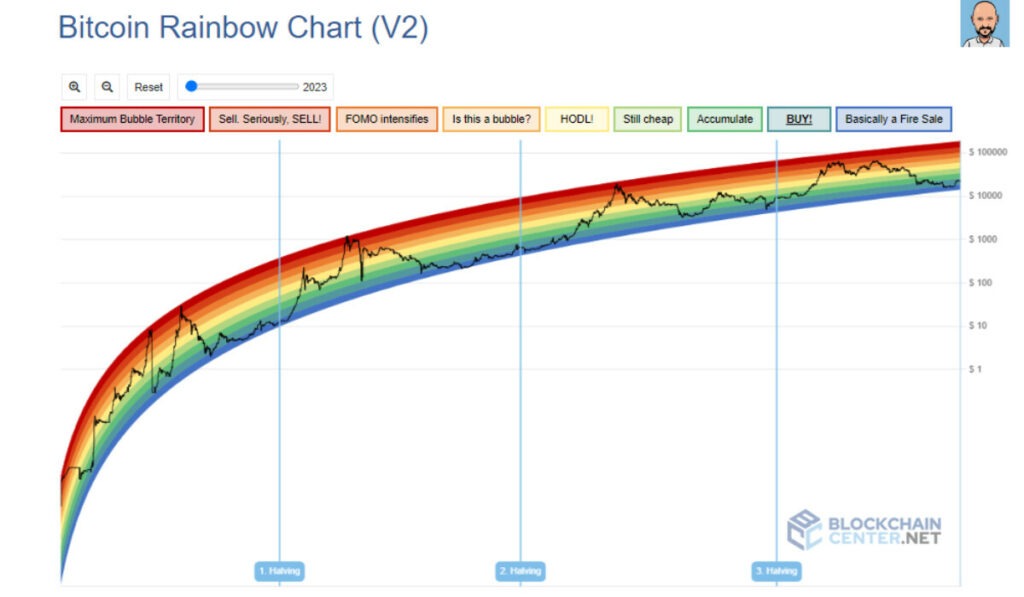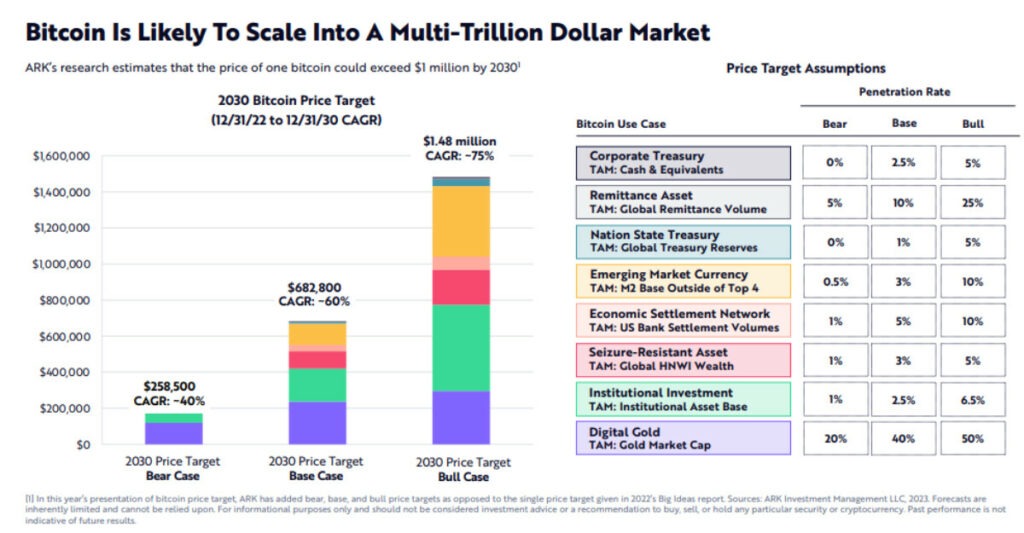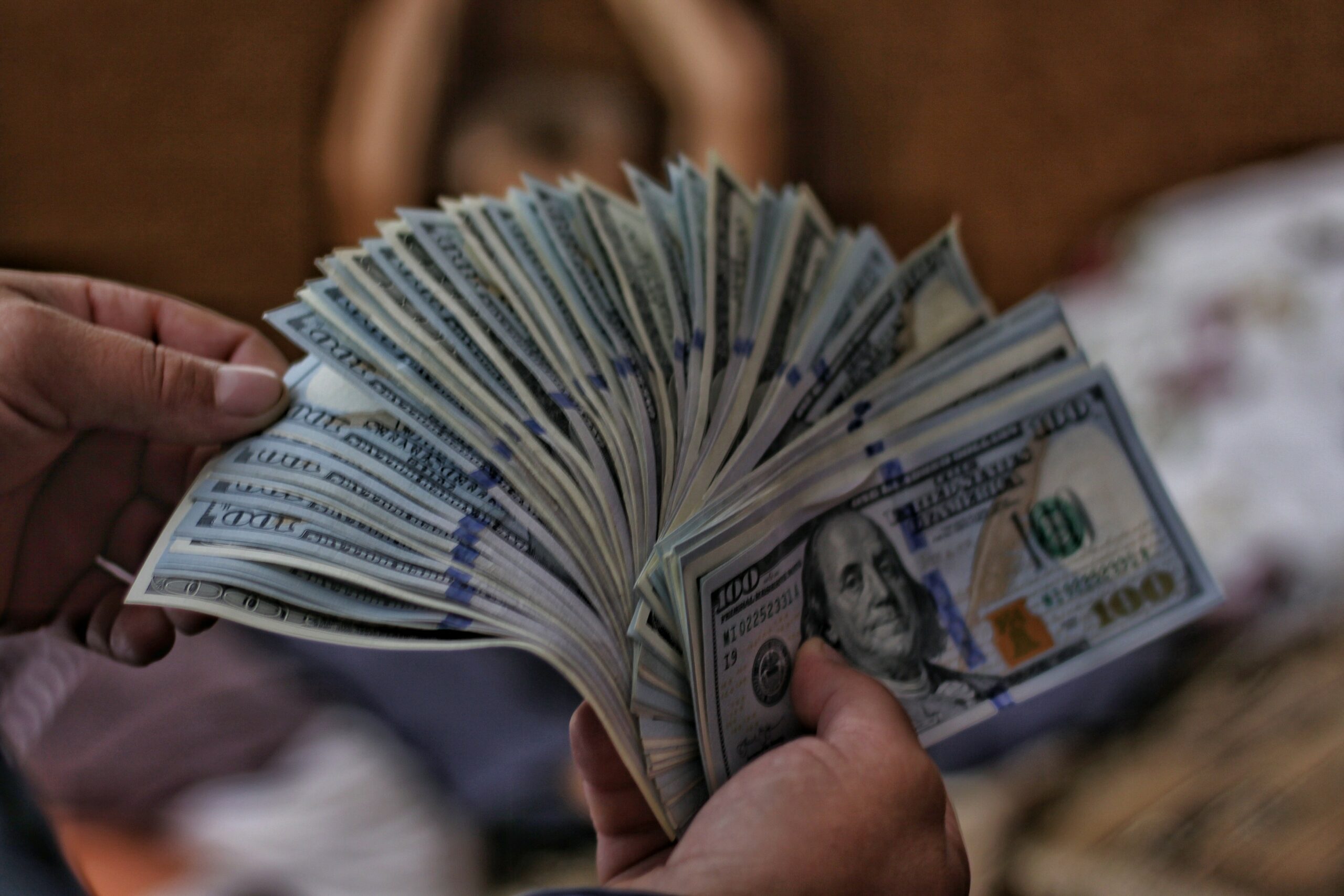The use of objects with perceived value as a medium of exchange dates back to ancient times. It is believed that our ancestors traded using the barter system before money was used. We are now in the digital assets and cryptocurrency era, where Bitcoin (BTC) is considered the first and king. But can it increase in value so that a single BTC can make the holder a millionaire?
In 2009, Satoshi Nakamoto launched a digital currency that is designed to be decentralized, scarce, transparent, and secure at the same time. It is decentralized because no central bank can dictate upon it. Scarcity is guaranteed by the program which stops minting new Bitcoins at 21 million. It is transparent because transactions can be verified via a public ledger. This ledger’s authenticity is secured by the power of countless computers in the network.
These advantages of Bitcoin over traditional investments and fiat have led to speculations on what the Bitcoin price will be in the near future. Several theories, models, and predictions are promising once-in-a-lifetime wealth. But is there any basis for the numbers they are advertising? Let us check some of them to find out.
Bitcoin Stock-to-Flow Model
The Stock-to-flow Model, proposed by pseudonymous Plan B, is a popular framework for predicting Bitcoin’s price. It looks at the number of coins that exist (the “stock”) and the rate at which new coins are being produced (the “flow”). If there are a lot of coins in the world and not many new coins are being produced, the Stock-to-Flow Model says that the value of the coins should increase over time.
One analogy would be to think of bitcoin as collectible stamps. Imagine two countries that produce stamps. One country produces a lot of stamps all the time, while the other country only produces a few stamps every year. The stamps from the country that produces a lot of them will not be as valuable as the stamps from the country that produces only a few of them.
A mathematical way of looking at it involves dividing the total available supply by the annual production rate or minting of Bitcoin. The annual flow or BTC minting rate is approximately 328,000 and the total current supply is around 19.2 million (Please note that these numbers will change over time). So the equation will be 19,200,000 / 328,000 = 58.53. This means that it will take about 58 years to mint the same number of Bitcoin in circulation. A higher number would indicate that an asset is rarer and thus more valuable. This number will go higher since the annual production rate is programmed to lessen as time goes by.
This Bitcoin Stock-to-Flow Model became popular because of its accuracy up until the price hit a wall at just below $70,000. Those who were predicting a 6-digit price realized that it was not perfect. Even Ethereum founder Vitalik Buterin fired a tweet that says that financial models which give a false sense of certainty deserve mockery.
Metcalfe’s Law
Metcalfe’s Law is an economic theory that states the value of a network is proportional to the square of the number of nodes, or participants, in the network. It was first proposed by Robert Metcalfe in the early 1980s in the context of computer networks but has since been applied to other types of networks, including social networks and financial networks.
In simple terms, the theory proposes that as a network grows, the value it generates for its participants grows exponentially. Each new participant in the network, which in our case is the Bitcoin Network, increases the number of potential connections, leading to increased opportunities for collaboration, communication, and exchange. The value of Bitcoin should theoretically increase as more people adopt it and more transactions are conducted in the network.
While this theory hasn’t gained popularity compared to the stock-to-flow model, we have to consider the history of the internet which is the original subject of Metcalfe’s theory. The internet was an obscure technology with few users when it was first introduced. The value of the internet is now incalculable since the world adopted it. This is the same path Bitcoin is currently traversing.
Bitcoin Rainbow Chart v2
According to myths, there is supposed to be a pot of gold at the end of the rainbow. What if there is a rainbow that can provide a Bitcoin buy and sell signal? The Bitcoin Rainbow Chart version 2 was created to provide users with an easy-to-follow chart on when to get in and out of BTC.

The chart shows a rainbow that is perpetually going up, which suggests that Bitcoin will go up in value as time goes by. When the price goes to the lower side of the rainbow, users are advised to accumulate and sell when it reaches the top of the arc.
It gained popularity since it is probably one of the easiest guides to follow, but the 2022 crypto bear market broke the first version of this chart. The price dropped way below the projected bottom, to the disappointment of a lot of users. This is the reason why version two was released. This shows that no model is perfect and other factors should be considered when investing.
What are Financial Institutions Projecting?
Big financial institutions play a crucial role in promoting Bitcoin and crypto adoption. They have the resources to research which sectors to invest in. They also have enough cash to push the market capitalization of their chosen sector. It is common knowledge that companies like Tesla and Microstrategy are heavily invested in Bitcoin.
Ark Invest, a major American Investment firm, is predicting a one million dollar price valuation for Bitcoin by 2030. The prediction is based on the premise that BTC users will increase in the future. Its market capitalization may go up once it is accepted as a store of value similar to gold.

Cathie Wood, CEO of Ark Invest, has gone on record that the $1 million price is possible. She stated that this downturn in the market is a battle test of the Bitcoin thesis. According to Cathie, institutions will move into Bitcoin once they have done their homework.
Is Selling the Farm to Get into Bitcoin a Good Idea?
A lot of investors are into crypto in the hopes of multiplying their wealth. Bitcoin has proven to be a good investment for early adopters who have seen their capital multiply exponentially. This is the reason why a lot of beginners are enticed to dip their toes in the market. But will this thesis hold up in the future?
The price projections were off the roof before the 2022 bear market and crypto contagion. The implosion of several crypto companies was a somber reminder that investing in a volatile asset is not for the faint of heart. Those who were expecting to create multi-generational wealth were faced with the fact that they might be able to recover their money.
So why are there still bullish projections? Why are financial institutions investing in Bitcoin? This is probably because bitcoin, unlike fiat, is a deflationary asset that is designed to stop minting after reaching 21 million. Maybe it is because it is designed to be secure while being transparent. Or maybe because it is designed not to be controlled by a central bank or a single entity.
Is selling the farm a good idea? A good financial advisor would probably tell you not to put your eggs in one basket. Aside from the theories and projections, we also have to consider market fundamentals and regulations being crafted for cryptocurrencies. In the end, we are all responsible for our financial decisions. And these decisions should be made after we have done our own research.
___
Featured Image from Unsplash





